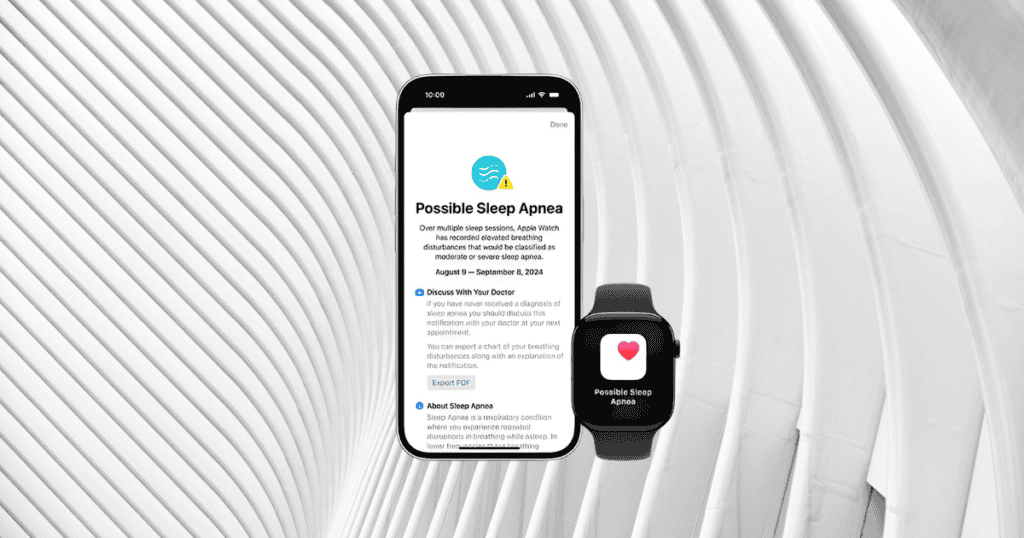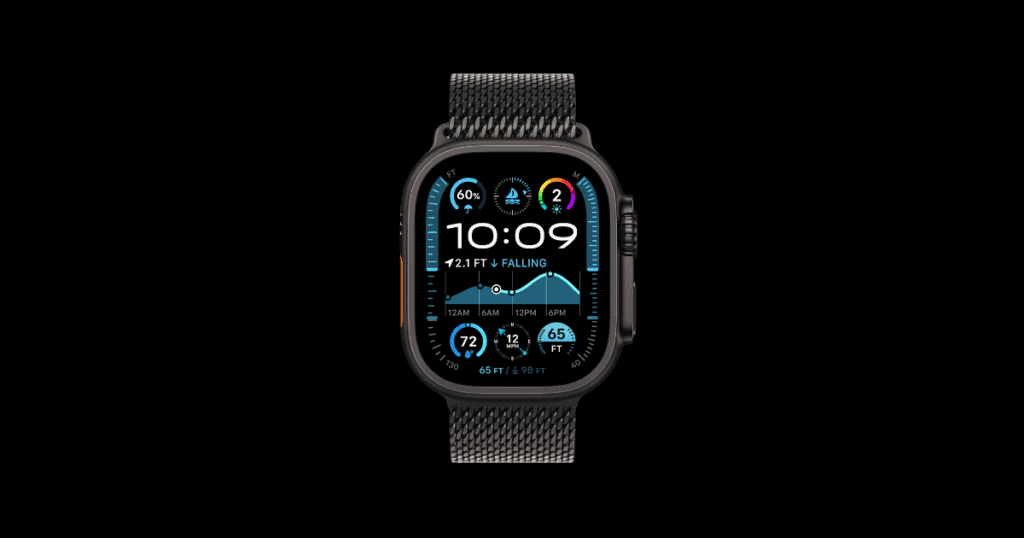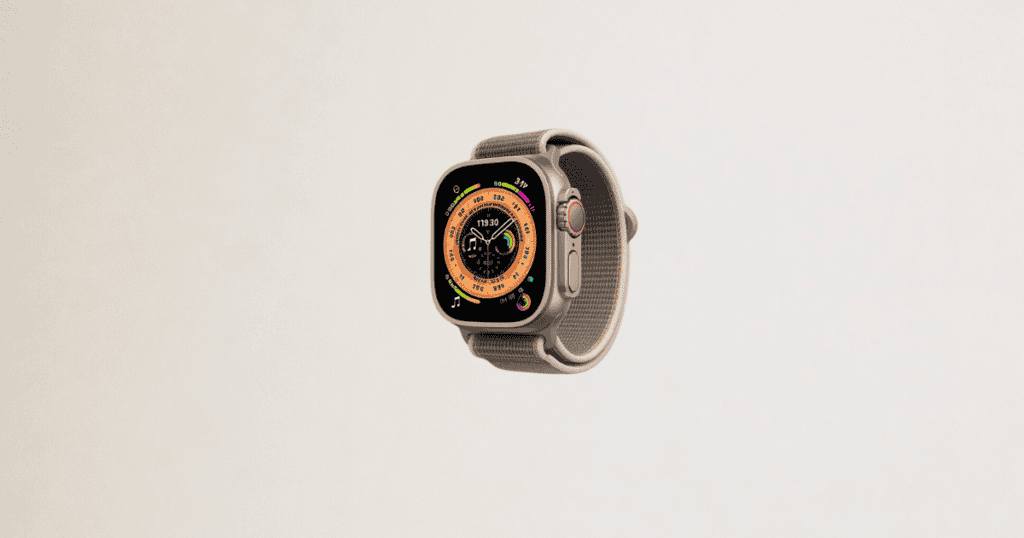The introduction of sleep apnea detection features in the Apple Watch Series 10, 9, and Ultra marks a significant advancement in personal health monitoring. By employing sophisticated algorithms alongside an accelerometer, these devices not only track wrist movements but also identify potential breathing disturbances during sleep. This capability offers users valuable insights into their sleep patterns and health status. However, the implications of these features extend beyond mere monitoring—what do they mean for the future of sleep health and personal wellness? Exploring this further reveals a complex landscape of technology and health management.
How Sleep Apnea Detection Works
Sleep apnea detection on the Apple Watch employs advanced technology to effectively monitor and analyze sleep patterns. Utilizing an accelerometer, the device tracks wrist movements to identify interruptions in breathing, capturing critical health metrics over a continuous 30-day period.
This thorough data collection enables the algorithm, developed through machine learning and validated in clinical studies, to accurately assess breathing disturbances. Users receive timely notifications indicating whether their sleep apnea risk is elevated or not, facilitating proactive health management.
Early detection of sleep apnea can lead to essential medical interventions, greatly reducing associated health risks such as hypertension and diabetes. Consequently, the system not only enhances individual awareness but also promotes overall well-being through informed decision-making regarding sleep health.
Key Features of Apple Watch Series 10
The Apple Watch Series 10 introduces a suite of innovative features designed to enhance user health monitoring, with a particular emphasis on sleep health.
A standout capability is its advanced sleep apnea detection system, which employs an accelerometer to meticulously track breathing disturbances during sleep. This system collects 30 days of continuous data, offering users timely notifications about potential moderate to severe sleep apnea events.
Users can conveniently access their nightly breathing disturbance metrics in the Health app, where readings are categorized as Elevated or Not Elevated.
Validated through a large clinical study, this feature confirms its effectiveness in identifying individuals with at least mild sleep apnea, addressing a critical global health issue affecting over 1 billion people.
Comparison With Series 9 and Ultra
When comparing the Apple Watch Series 10 with its predecessors, the Series 9 and Ultra 2, notable similarities and advancements in sleep apnea detection emerge.
All models utilize accelerometer technology to monitor nightly breathing disturbances, ensuring a thorough health monitoring experience.
Key features include:
- Clinical validation of the detection algorithm across all models
- Requirement of 30 days of continuous data collection for accurate assessments
- Ability to view nightly breathing disturbance metrics in the Health app
- Elevation classification of breathing disturbances for user awareness
- Anticipated FDA clearance for widespread availability in over 150 countries
These shared capabilities highlight the commitment to enhancing sleep apnea detection, promoting better sleep health for users of the Apple Watch Series 10, Series 9, and Ultra 2.
Technology Behind Detection
Advancements in sleep apnea detection technology reveal a sophisticated integration of various components designed to enhance health monitoring capabilities.
The Apple Watch employs an accelerometer to monitor wrist movements, effectively detecting interruptions in breathing patterns during sleep. Over a continuous 30-day data collection period, the device analyzes these movements to identify breathing disturbances accurately.
Utilizing machine learning algorithms, the system classifies disturbances as elevated or not, based on observed sleep patterns. Clinical validation of this detection algorithm was conducted through an extensive study, confirming its ability to identify participants with at least mild sleep apnea.
This feature not only provides insights into sleep health but also allows users to export data for discussions with healthcare providers, promoting informed medical evaluations.
User Experience and Comfort
Ensuring a comfortable wearing experience is crucial for the effective monitoring of sleep apnea through wearable technology. Users often express reluctance to wear smartwatches during sleep due to comfort concerns, which can directly impact the accuracy of sleep monitoring.
To enhance user experience, manufacturers are focusing on several key aspects:
- A thinner profile for improved comfort during overnight wear.
- Soft, breathable materials to minimize skin irritation.
- Adjustable straps for a customized fit.
- Seamless integration of health notifications for easy engagement.
- User feedback mechanisms to inform future design improvements.
These considerations are essential, as the success of health tracking features relies on consistent use throughout the night, making comfort paramount in the design of wearable devices.
Health Benefits of Monitoring Sleep
The health benefits of monitoring sleep extend far beyond mere awareness; they play an essential role in identifying conditions like sleep apnea, which affects over 1 billion individuals worldwide.
Early detection through monitoring sleep can facilitate timely medical intervention, greatly improving health outcomes and reducing risks associated with serious conditions such as hypertension and type 2 diabetes.
Regular observation of sleep patterns raises awareness about breathing disturbances, prompting individuals to seek professional evaluation when necessary.
This proactive approach not only enhances understanding of sleep health but also contributes to better sleep quality, which in turn enhances daily functioning and overall well-being.
Ultimately, increased awareness fosters healthier lifestyle choices and better management of existing health conditions.
Future of Sleep Health Technology
As awareness of sleep health continues to grow, the future of sleep health technology appears promising, particularly in the domain of sleep apnea detection.
The integration of advanced machine learning in wearable technology is revolutionizing how we monitor sleep patterns and identify disturbances. Key developments to anticipate include:
- Enhanced predictive algorithms for accurate sleep apnea detection.
- Seamless integration of sleep health monitoring features into everyday devices.
- User-friendly interfaces that facilitate proactive health management.
- Collaborative platforms for sharing data with healthcare providers.
- Increased accessibility of non-invasive solutions for early detection.
These advancements not only empower users to take charge of their sleep health but also pave the way for timely medical interventions, ultimately improving health outcomes for the global population affected by sleep apnea.
MacReview Verdict
To summarize, the sleep apnea detection capabilities of the Apple Watch Series 10, 9, and Ultra represent a significant advancement in health monitoring technology. By seamlessly integrating sophisticated algorithms with user-friendly interfaces, these devices empower individuals to gain insights into their sleep patterns. This proactive approach fosters greater awareness of potential health issues, encouraging timely discussions with healthcare professionals. Ultimately, these innovations pave the way for improved sleep health management, enhancing overall well-being in a subtle yet impactful manner.




